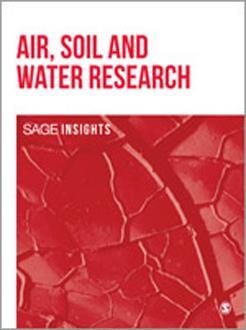The Santa Lucia River basin provides drinking water to 60% of Uruguay population. The input of excessive amounts of nitrogen and phosphorus both from point and nonpoint sources could impair surface water quality and prevent its use for human consumption. The objective of this work was to evaluate surface water quality in small catchments under agricultural use located within this river basin. To this end, 5 streams and 4 small polders were surveyed between September 2008 and December 2009. The median concentrations of total phosphorus and total nitrogen in the streams across all sites and periods were 770 and 1659 µg L−1, respectively, exceeding in the case of total phosphorus national and international thresholds. Furthermore, soluble phosphorous, the most readily available form to algae, represented 88.3% of total phosphorus. Concentrations of phosphorous and nitrogen in polders were also high. The eutrophication process of this water bodies could be linked to the intensive agricultural land use in the area because the nutrient input from cities and industries was not relevant in these catchments.
How to translate text using browser tools
1 January 2020
Surface Water Quality of Intensive Farming Areas Within the Santa Lucia River Basin of Uruguay
Patricia Barreto,
Santiago Dogliotti,
Carlos Perdomo

Air, Soil and Water Research
Vol. 10 • No. 1
January 2017
Vol. 10 • No. 1
January 2017
Eutrophication
nonpoint pollution
soluble phosphorus




